The Global Spread of Celtic Spirituality: Understanding Its Influence
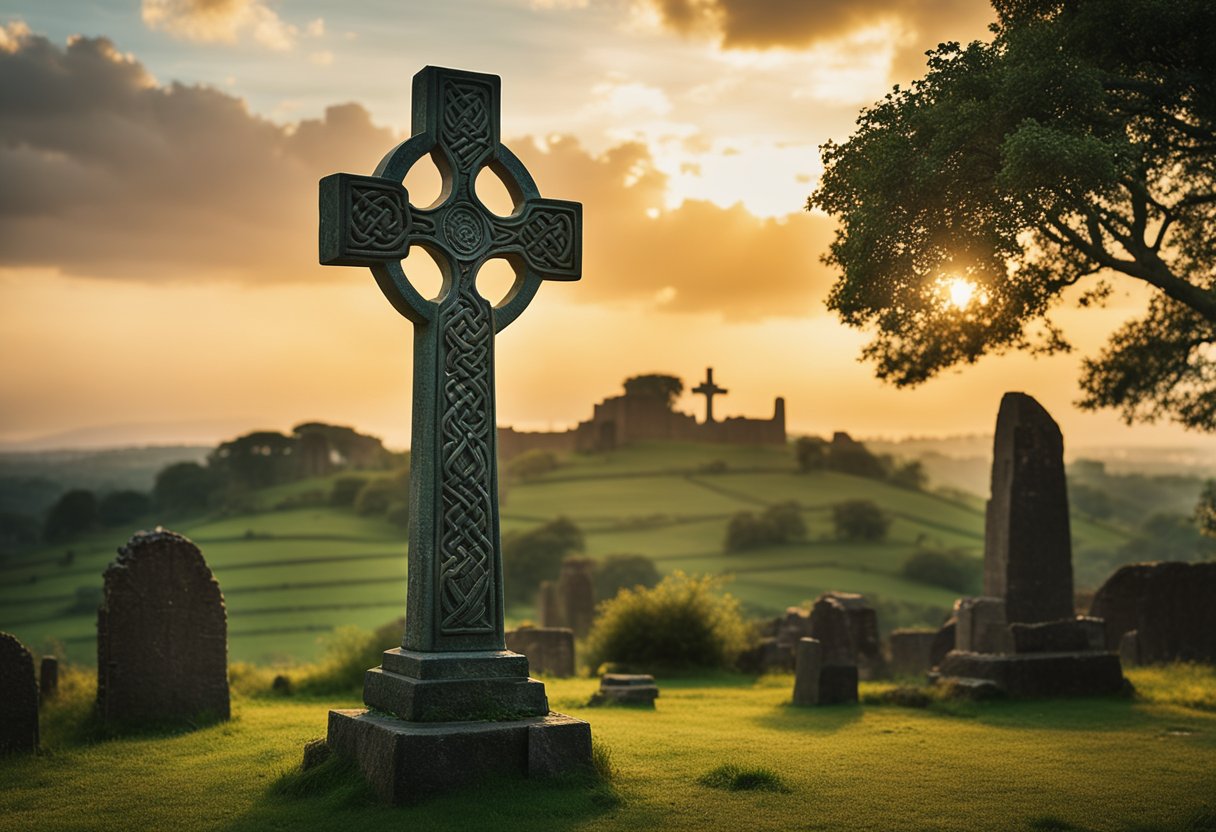
Updated On: April 21, 2024 by Maha Yassin
Celtic spirituality has seen a remarkable upsurge in global interest, transcending its traditional geographical confines to touch people’s lives worldwide. Its appreciation of nature and interconnectedness emphasise universal human experiences, making it relevant in diverse contexts. Once tightly woven into the fabric of Celtic societies in Western Europe, these ancient spiritual practices now resonate across continents, adapted to modern spiritual quests and ecological sensibilities.
Deeply held beliefs and practices that honour the divine in everyday life are at the heart of this spirituality. Celtic spirituality is renowned for its perspective that recognises the sacredness in all things and promotes the cultivation of soul friendships. In merging with various aspects of contemporary life, these practices nurture a sense of community and personal growth. They encourage us to seek out sacred spaces, whether in the wilds of nature or within bustling cities, thus manifesting the essence of these traditions in daily routines and rituals.
Historical Roots of Celtic Spirituality
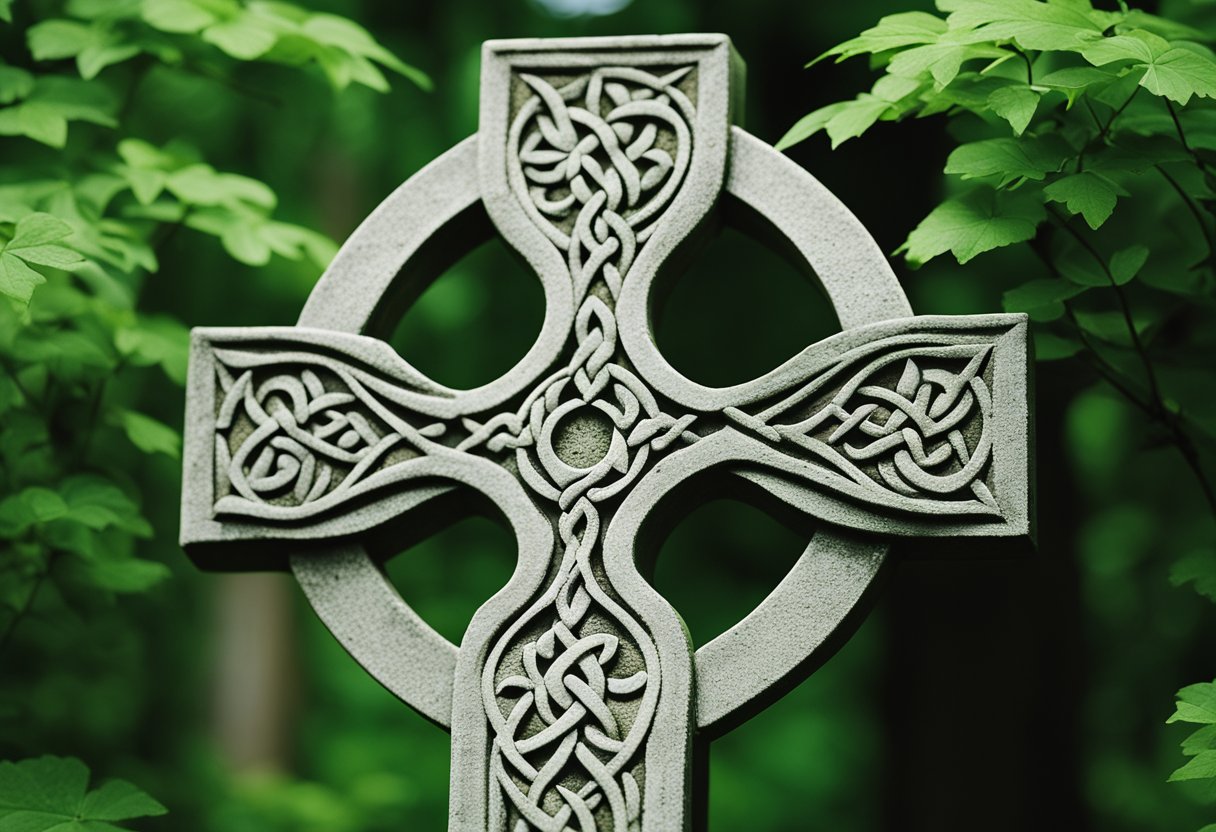
Before we explore the intricate weave that forms the historical fabric of Celtic spirituality, we recognise its foundation within the ancient practices of the Celts, the transformative influence of the Roman Empire, and the distinctive emergence of Celtic Christian spirituality.
The Ancient Celts and Their Legacy
The Ancient Celts were a collection of tribes from central Europe that shared a similar language, culture, and religious beliefs. With a civilisation that spanned across what is now known as Gaul, their legacy was deeply interwoven with elements of Celtic mythology and reverence for nature, which continues to influence various spiritual practices. They saw the natural world as imbued with spirits and considered sacred sites portals to other worlds.
Influence of the Roman Empire and Pagan Traditions
With the expansion of the Roman Empire, Celtic territories were progressively absorbed. This led to a fusion of cultures, and while it partly eroded traditional Celtic and pagan practices, it also allowed for these traditions to amalgamate with Roman customs. Historical evidence points to syncretism, where local deities were equated with Roman gods, blending and preserving aspects of Celtic beliefs within the empire’s domain.
Emergence of Celtic Christian Spirituality
As Christianity spread, the transition from old pagan customs to the new faith was gradual. Celtic Christian spirituality emerged as a unique strand within this milieu, with Celtic saints such as St. Patrick and St. Brigid playing key roles. This new spirituality managed to harmonise Christian doctrine with local traditions, enriching the religious landscape. The resulting spirituality manifested through a profound sense of the holiness of creation, a hallmark that has endured in spiritual expressions that are recognisable today.
Key Aspects of Celtic Spiritual Practices

We explore the heart of Celtic spiritual practices, deeply rooted in the natural world and community life. These aspects provide a unique perspective on understanding our place within the cosmos and our connection to one another.
The Role of Nature and the Seasons
Celtic spiritual practices are intrinsically tied to nature and the changing seasons. This tradition views the natural world as an embodiment of the divine, where each tree, river, and stone is suffused with spiritual significance. The seasonal festivals, such as Samhain and Beltane, mark the transitions of nature’s cycles, celebrating harvest, rebirth, and the balance of light and dark.
Art, Mythology, and Symbolism
Art and mythology play pivotal roles in conveying the spiritual beliefs of the Celts. Myths narrate the tales of Celtic gods and heroes, embedding the culture’s values and history into the collective consciousness. Meanwhile, Celtic art is recognised for its intricate designs, which are rich with symbolism that denotes concepts like eternity and the interconnectedness of life.
The Monastic Tradition and Community Life
The monastic tradition is fundamental to Celtic spirituality, highlighting the value of community and spiritual practices within it. Monastic sites served as places of worship and retreats and as centres for learning, art, and hospitality. The concept of a soul friend, or anam cara, is a beautiful articulation of the deep spiritual bonds fostered in Celtic communal living.
The Interplay Between Christianity and Celtic Traditions
Celtic spirituality and Christianity have long been intertwined, marked by harmonisation and divergence in practices and beliefs. Our exploration delves into this rich tapestry, revealing how Celtic traditions have blended with and stood apart from mainstream Christian liturgy and theology.
Syncretism with Christian Liturgy and Theology
Integrating Celtic traditions into Christian liturgy and theology often involved a syncretic process, whereby pre-Christian beliefs were reinterpreted within a Christian framework. For example, the Celtic emphasis on the natural world was harmonised with Christian creation theology, acknowledging God’s presence in every aspect of nature.
Celtic spirituality’s focus on the Trinitarian concept embraced the idea of a threefold manifestation of deity, which resonated well with Christian theology, given its Trinitarian doctrine of Father, Son, and Holy Spirit. This mirrored aspect of theologies provided a point of connection between the Celtic approach and wider Christian belief systems.
Differences from Roman Church Practices
In contrast, certain Celtic Church practices differed significantly from those of the Roman Church. A notable example is the distinct approach to monastic life. At the same time, the Roman Church had more centralized and uniform regulations and Celtic monastics often led lives of greater asceticism and solitude in nature.
Additionally, the dating of Easter and the style of tonsure were points of contention between the Celtic and Roman traditions. The Celtic Church followed its indigenous method of calculating Easter. It sported a unique tonsure, which cut hair from the front of the head, reflecting older Druidic practices, while the Roman Church considered these to diverge from its standardised customs.
Celtic Spirituality in Daily Life
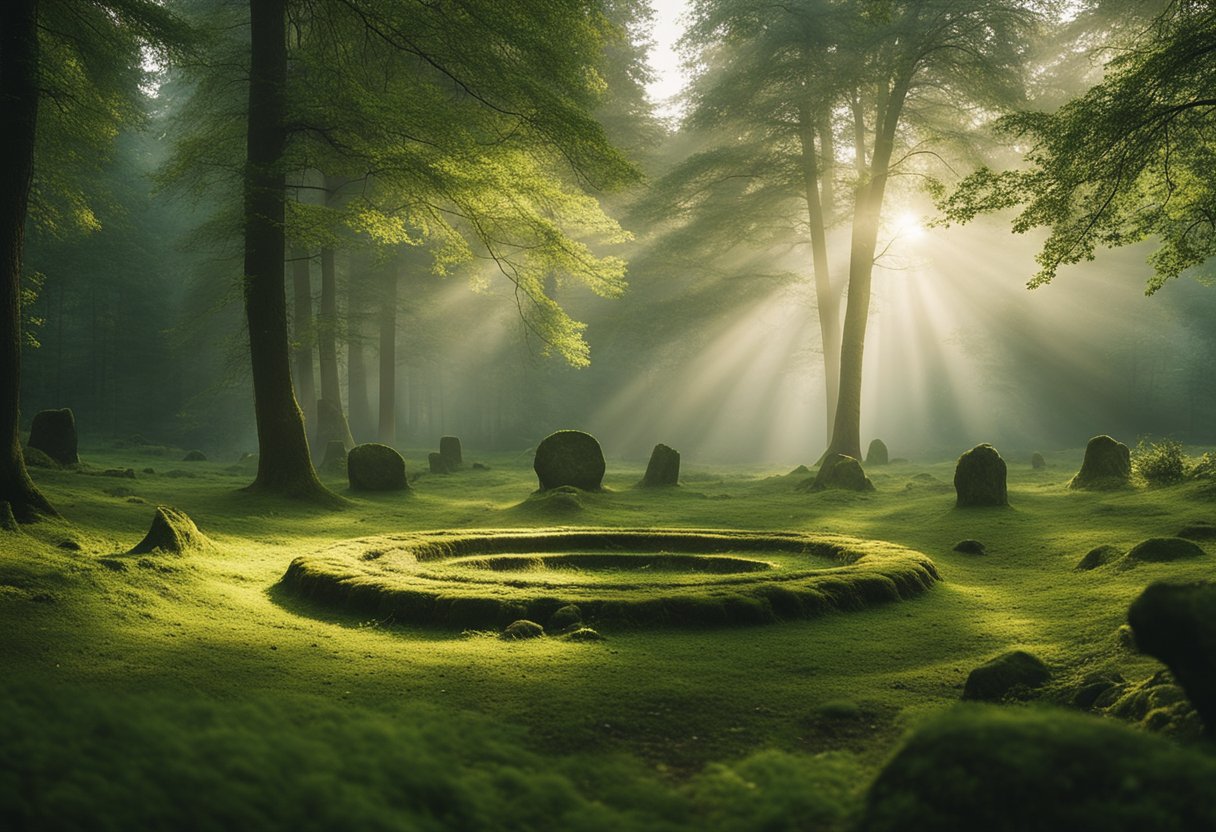
In embracing Celtic spirituality, we integrate timeless wisdom into the fabric of our daily existence. It’s not just a matter of belief but a lived practice that permeates our routines.
Practices of Prayer and Meditation
In the rhythm of Celtic spirituality, prayer and meditation are not confined to designated times or spaces; rather, they infuse our everyday moments. Prayer is a continuous conversation with the Divine, interwoven with our routine tasks and acknowledging the sacred in the mundane. Meanwhile, meditation often draws from the natural world, reflecting a deep connection with creation that grounds us in the present moment. This mindfulness encourages a tranquility that extends beyond the time spent in meditation, influencing our entire day.
Celtic Hospitality and Generosity
A profound generosity of spirit characterises the ethos of Celtic hospitality. It’s a welcoming openness expressed through our actions, inviting others into our space and lives. Demonstrated by sharing meals or providing for those in need, this form of hospitality is a tangible expression of our spirituality. Coupled with generosity, hospitality is integral to our approach to community – cultivating relationships and fostering connections that honour the spirit of togetherness. This practice stems from a tradition that values every individual as an essential part of the wider web of life.
Sacred Spaces and Pilgrimage

Celtic spirituality encompasses a profound connection to sacred spaces, where pilgrimage serves to engage with the divine. Deeply rooted in the natural world, these sites have drawn individuals for centuries seeking spiritual enrichment and communion with the Celtic gods.
Iona and Its Significance
Iona, a small island in Scotland, is a beacon of Celtic spirituality. Recognised for its serene beauty and historical abbey, Iona is a potent symbol of the faith, attracting thousands of pilgrims annually. Our journeys here are not simply to a place but to a spiritual experience, where the thin veil between the mundane and the sacred brings us closer to the essence of worship the Celtic people have practised for generations.
Other Notable Sites of Worship
Beyond Iona, many other sites stand as a testament to the devotion of the Celts. With its Arthurian legends, Glastonbury Tor and the Wells of Brigid in Ireland resonate with the presence of the divine, serving as focal points for worship and adoration. Hill of Tara, once the seat of the High Kings of Ireland, connects us to our ancestral leadership and their divine right to rule, purportedly granted by the gods. These locales form a geographic tapestry of belief, where the natural world intertwines indelibly with the spiritual pursuits of the Celts.
Symbols and Art in Celtic Spirituality
Celtic spirituality encompasses a rich tapestry of symbols and art, each deeply ingrained with spiritual significance and steeped in history.
Celtic Cross and Metalwork
The Celtic Cross is arguably the most iconic symbol associated with Celtic spirituality. Its distinctive form, featuring a central ring connecting the arms of the cross, is believed to represent the unity of heaven and earth. Our craftsmen have long captured this essence in various mediums, notably in metalwork. Master metalworkers would skillfully create crosses adorned with intricate knotwork and zoomorphic designs, infusing the piece with layers of meaning and reverence.
Beyond the cross, metalwork has served as a profound expression of Celtic art and spirituality. Objects ranging from jewellery to weaponry were often embellished with symbolic motifs and patterns. These art pieces reflected a belief system rooted in the natural world and the intertwining of the physical and spiritual realms.
Manuscripts and Scribes’ Contributions
Celtic spirituality is also preserved in the pages of illuminated manuscripts. Scribes played a crucial role in the spiritual life of Celtic communities by producing texts that were both functional and works of art. The Book of Kells is a prime example, where every page is a testament to the scribes’ skill and devotion. Illustrations of intricate knotwork, animal forms, and vibrant colours accompany sacred texts, elevating the reader’s spiritual experience.
Literature has always been a vessel for the spiritual and mythological heritage of the Celts. The meticulous work of the scribes, through their contributions to literature and art, ensured that the wisdom and visions of Celtic spirituality were passed down through generations. Blending their artistic talent with their scholarly pursuits resulted in manuscripts that are significant religious texts and masterpieces of Celtic art.
Prominent Figures in Celtic Spirituality
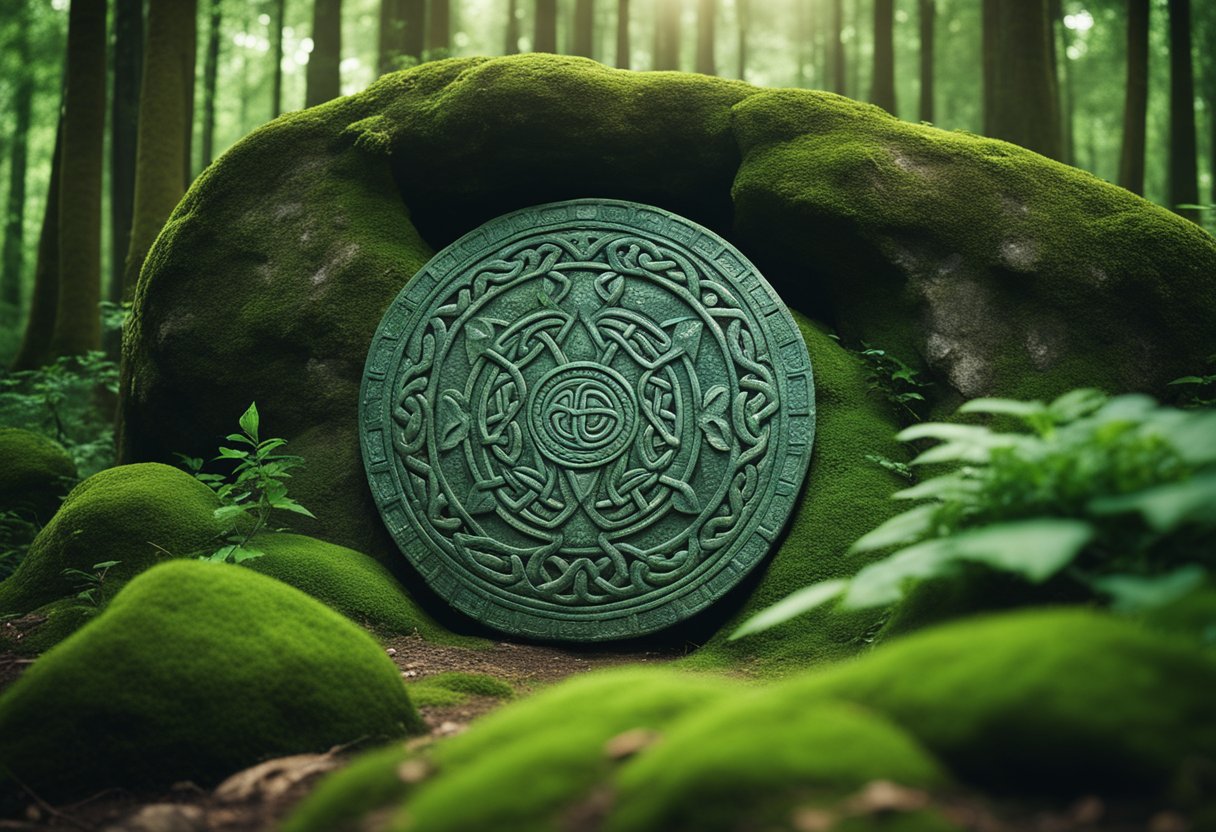
In tracing the global influence of Celtic spirituality, it is essential to examine the individuals who have been pivotal to its development and spread. These prominent figures have shaped the distinct spiritual practices that resonate with many worldwide.
Saint Patrick and Other Celtic Saints
Saint Patrick remains the most renowned figure in Celtic spirituality, widely celebrated as the patron saint of Ireland. His missionary work in the 5th century was crucial in spreading Christianity across Ireland, intertwining local customs with Christian beliefs. St. Patrick is credited with eloquently expressing the Christian doctrine through traditional Celtic symbols, such as the shamrock, to explain the Holy Trinity.
Other Celtic saints also played significant roles in the religious landscape of their times. Saint Brigid, for instance, is another revered figure known for her compassionate service and establishment of several convents, projecting the values of Celtic Christianity beyond Ireland.
Spiritual Leaders and Their Teachings
Saints did not solely propagate Celtic spirituality; many spiritual directors and monastic leaders have also left their mark. The role of a spiritual director in Celtic tradition was to provide guidance and wisdom, fostering an environment where individuals could connect deeply with the divine and the natural world.
These leaders often wrote extensive treatises on spiritual practices, contributing to the rich body of knowledge that those on a spiritual path could draw from. Their teachings emphasised the sacredness of nature, the art of soul-friendship, and the practice of hospitality, all core elements embedded in Celtic spirituality.
Celtic Spirituality and the Natural World

One is quickly drawn to its profound respect for and symbiosis with the natural world in exploring Celtic spirituality. This ancient tradition celebrates the deep connection between humanity and creation, revealing a rich tapestry of reverence and ecological wisdom.
Reverence for the Creation
Celtic spirituality recognises that nature is alive with presence; every mountain, river, and breeze is imbued with significance. This viewpoint holds that the wind is not merely a meteorological phenomenon but a voice, a breath from the divine, communicating with us. Nature is not considered an inert backdrop to human activity; rather, it is a sacred community to which we belong. Our relationship with nature is not one of dominance but companionship and deep respect. One finds the heartbeat of Celtic spiritual practice in the silent whispers of the ancient trees and the rhythmic cadences of the ocean waves.
Celtic Views on Ecology and Wisdom
The Celts perceived an intrinsic link between ecological balance and spiritual wisdom. They approached the natural world as a source of knowledge and guidance, where understanding the cycles of nature meant understanding deeper truths about life itself. The changing seasons and the intricate web of life were seen as mirrors reflecting the dynamic nature of human existence. This perspective encouraged a lifestyle honouring the creation, fostering sustainability and respect for all life forms. Within this framework, one’s actions were always mindful of their effects on the environment, reflecting a wisdom that saw beyond the immediate to the interconnectedness of all.
Modern Revival and Global Influence
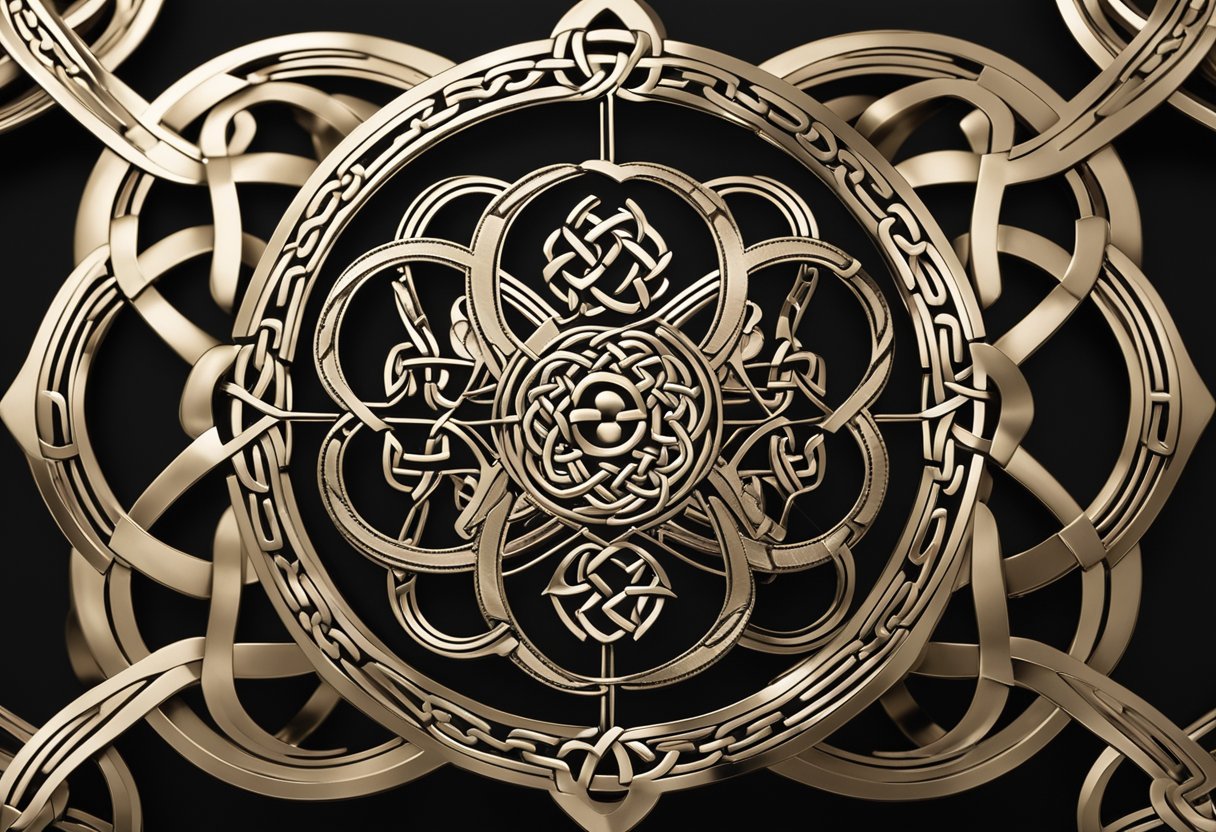
The resurgence of Celtic spirituality has seen a remembrance and revitalisation of ancient traditions, spreading far beyond its geographic origins.
Contemporary Interest and Practice
The revival of Celtic spirituality in recent years is more than just a trend; it is a meaningful reconnect with the spiritual practices of ancient Celtic Britain, Ireland, Wales, and Scotland. Throughout Europe, there has been a burgeoning interest in embracing these traditions. Institutions such as the Northumbria Community and Corrymeela have been instrumental in catalysing this resurgence, fostering a modern expression that holds to the essence of its roots. Their commitment to reflective practices, hospitality, and community life refers to the values underpinning Celtic Christian spirituality.
Spread in North America and Beyond
The influence of Celtic spirituality has not been contained to Europe alone; its spread in North America highlights its global appeal. America has seen increased spiritual retreats and communities modelled after Celtic ideals. These include the adoption of monastic rhythms and contemplative practices, which hark back to the ancient monasteries of Northumbria. With growing international interest, the principles of Celtic spirituality resonate strongly with individuals seeking a connection to nature, a rich spiritual heritage, and an inclusive community, regardless of their geographical location.
Impact on Literature and Popular Culture
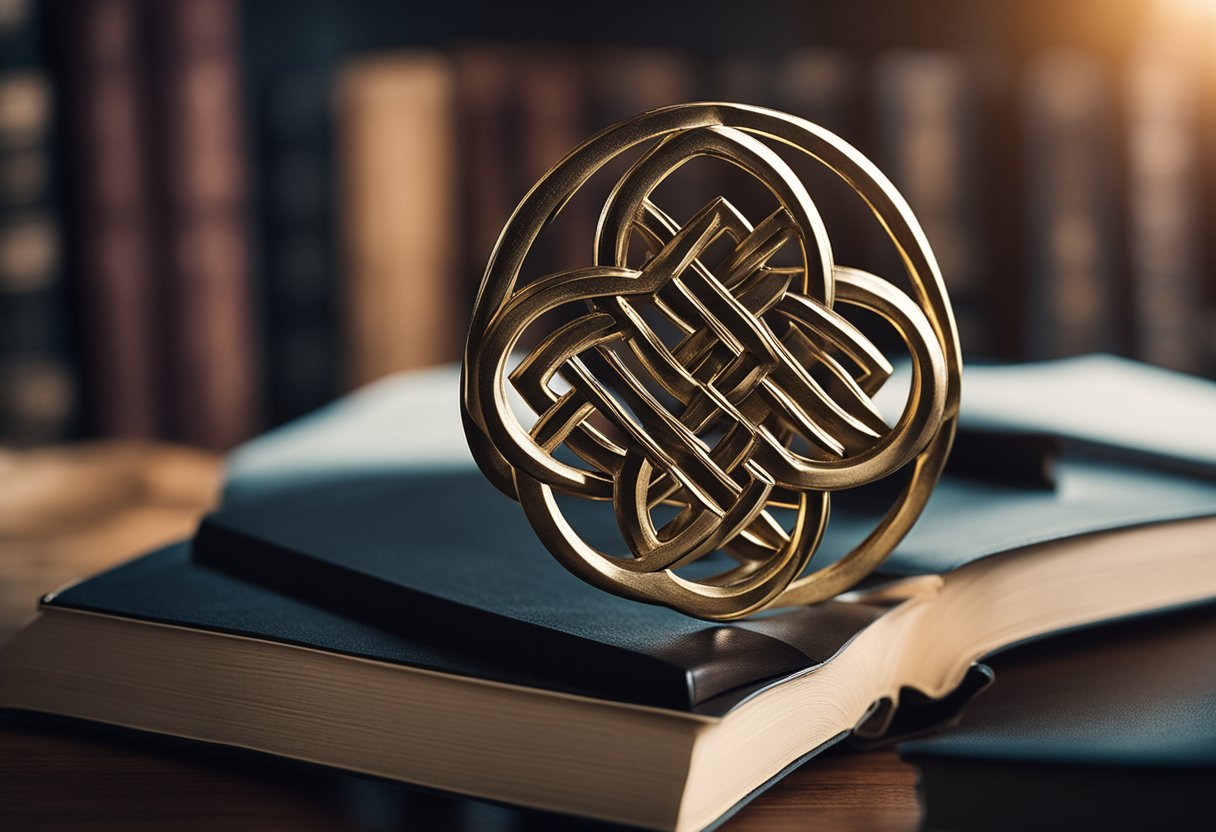
In tracing the tendrils of Celtic spirituality through literature and popular culture, we unveil a narrative woven into the global fabric of storytelling and symbolism.
Celtic Myths in Modern Media
Celtic myths have permeated modern media, lending their distinct narratives and characters to various platforms. A prime example is the celebration of myth and nature found within the literary anthology known as the Carmina Gadelica, which collects oral traditions from Scotland, allowing their ancestral voices to resound in today’s world. Its influence can be spotted in contemporary fantasy literature, films, and television series, where the enchantment and heroism of Celtic legends live on. These stories fuel our imagination and serve as a springboard for new interpretations that resonate with global audiences.
Use of Symbolism in Literature
The symbolism embedded in Celtic spirituality has been a rich vein for authors to mine. In literature, symbols such as the Celtic knot or the intricate patterns of Celtic art often signify eternal life and the complex interconnectivity of our human experience. Poems and novels draw on this symbolism, effectively using it to deepen thematic elements and character development. Through symbolic references to Celtic motifs, authors bridge the gap between the ancient and the modern, making the past relevant to contemporary readers. This symbolism, reflective of a spirituality deeply intertwined with nature and human introspection, transcends cultural boundaries and fosters a resonance that is both universal and enduring.
Frequently Asked Questions
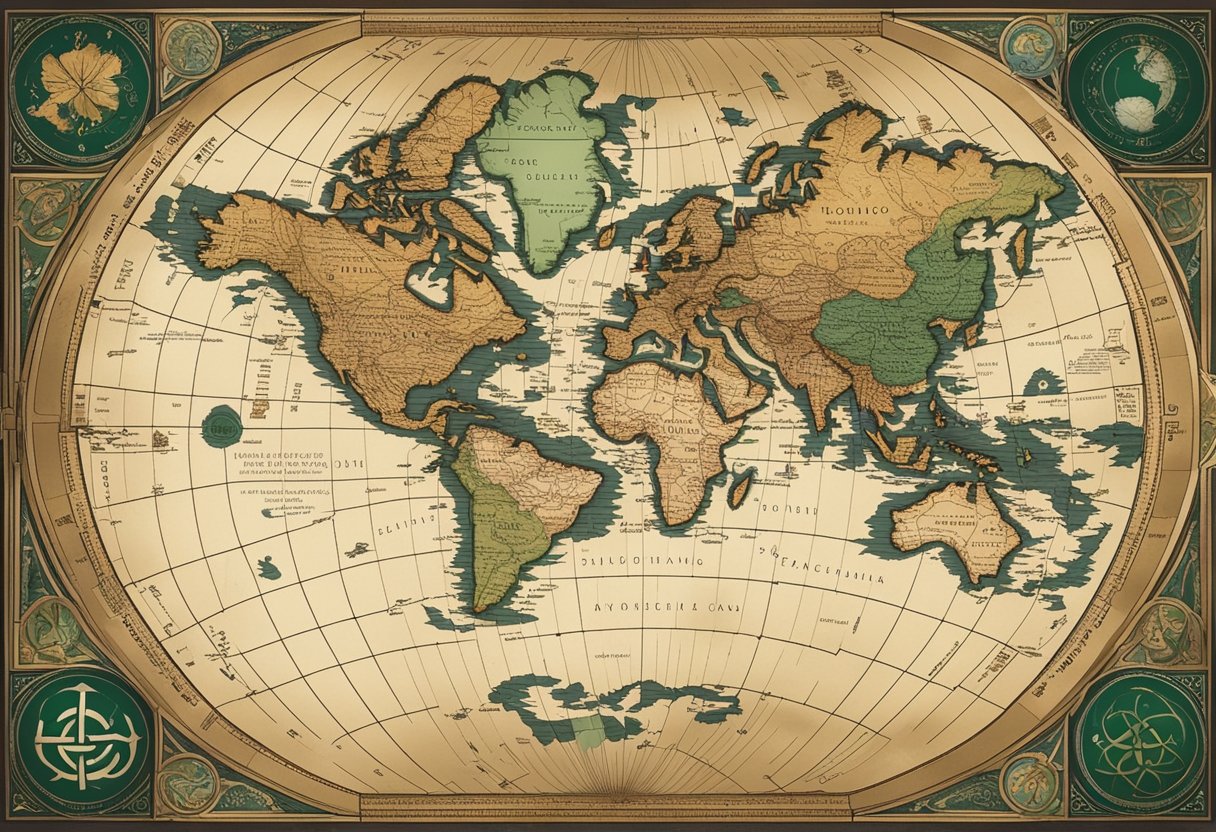
In this section, we’ll address some common questions regarding the spread and influence of Celtic spirituality.
What are the core beliefs of Celtic spirituality?
Celtic spirituality encompasses a deep respect for nature and the belief in the interconnectedness of all living things. It typically includes reverence for the natural world, the celebration of life cycles, and an emphasis on the presence of the divine in everyday life.
In what ways did Celtic spirituality differ from Roman Christianity?
Celtic spirituality differed from Roman Christianity in its structure and practices. It was less hierarchical and more community-focused, centred around monastic communities rather than a centralised church. It also integrated local traditions and had a unique approach to penance and contemplation.
How has Celtic spirituality influenced modern religious practices?
Celtic spirituality has left a mark on modern religious practices by emphasising the sacredness of nature and the divine in daily life. Its themes resonate in the contemporary spiritual landscape, inspiring some modern Christian practices and the New Age movement.
Which texts would best enhance understanding of Celtic spiritual traditions?
Examining the Carmina Gadelica, a collection of traditional Scottish Gaelic prayers, hymns, and invocations, is beneficial to understanding Celtic spiritual traditions further. Additionally, the works of John O’Donohue provide insight into the Celtic way of seeing the world.
To what extent is Celtic spirituality observed in contemporary times?
In contemporary times, elements of Celtic spirituality are often integrated into personal spiritual practices and observed through certain festivals such as Samhain and Beltane, which mark the changing seasons and connect believers with ancient Celtic traditions.
What impact did the advent of Christianity have on ancient Celtic beliefs and customs?
The advent of Christianity greatly transformed ancient Celtic beliefs and customs, as it brought new religious elements that were blended with existing traditions. This syncretism led to distinct practices still identifiable in religious expressions in regions once inhabited by the Celts.






